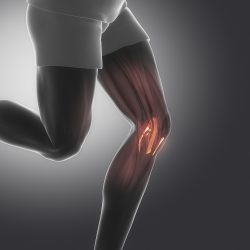 A new study has given us yet another good reason to exercise! The study found that exercise helps to prevent degradation of cartilage that is due to osteoarthritis.
A new study has given us yet another good reason to exercise! The study found that exercise helps to prevent degradation of cartilage that is due to osteoarthritis.
The study conducted at Queen Mary University of London has shown for the first time how the mechanical forces which are experienced by joint cells during exercise, prevents cartilage degradation. Exercise does this by suppressing the action of inflammatory molecules which lead to osteoarthritis.
The research team demonstrated exercise benefits on tissues which form our joints and how this is down to tiny hair like structures which are called primary cilia found on living cells.
When we exercise joint cartilage such as the knee and hip is squashed. Living cells in the cartilage detect this mechanical distortion which then block inflammatory molecules which are associated with conditions such as arthritis.
The anti inflammatory effect of physical activity is due to the activation of a protein called HDAC6. This protein triggers changes in the proteins that form the primary cilia.
Blocking the HDAC6 with pharmaceutical drugs prevented the anti inflammatory effects due to physical activity. Other drug treatments were able to mimic exercise benefits.
Changes which occurred in the length of the primary cilia which are only a few 1000th of a millimeter, provided a biomarker for the level of inflammation. During inflammation the cilia got longer. However, treatments that prevented the elongation successfully prevented this inflammation.
Additionally, the team’s findings might explain the anti inflammatory effects of normal blood flow in the arteries. This is important for the prevention of arterial disease such aneurysm and atherosclerosis.
The team hopes the findings will help in the development of treatments for diseases such as arthritis. These diseases affect more than 3 million people just in the United Kingdom. The results might lead to whole new therapeutic approaches which are known as mechano medicine in which drugs simulate the effect of mechanical forces to prevent the damaging effects of inflammation and treat arthritic conditions accordingly.
To view the original scientific study click below.





